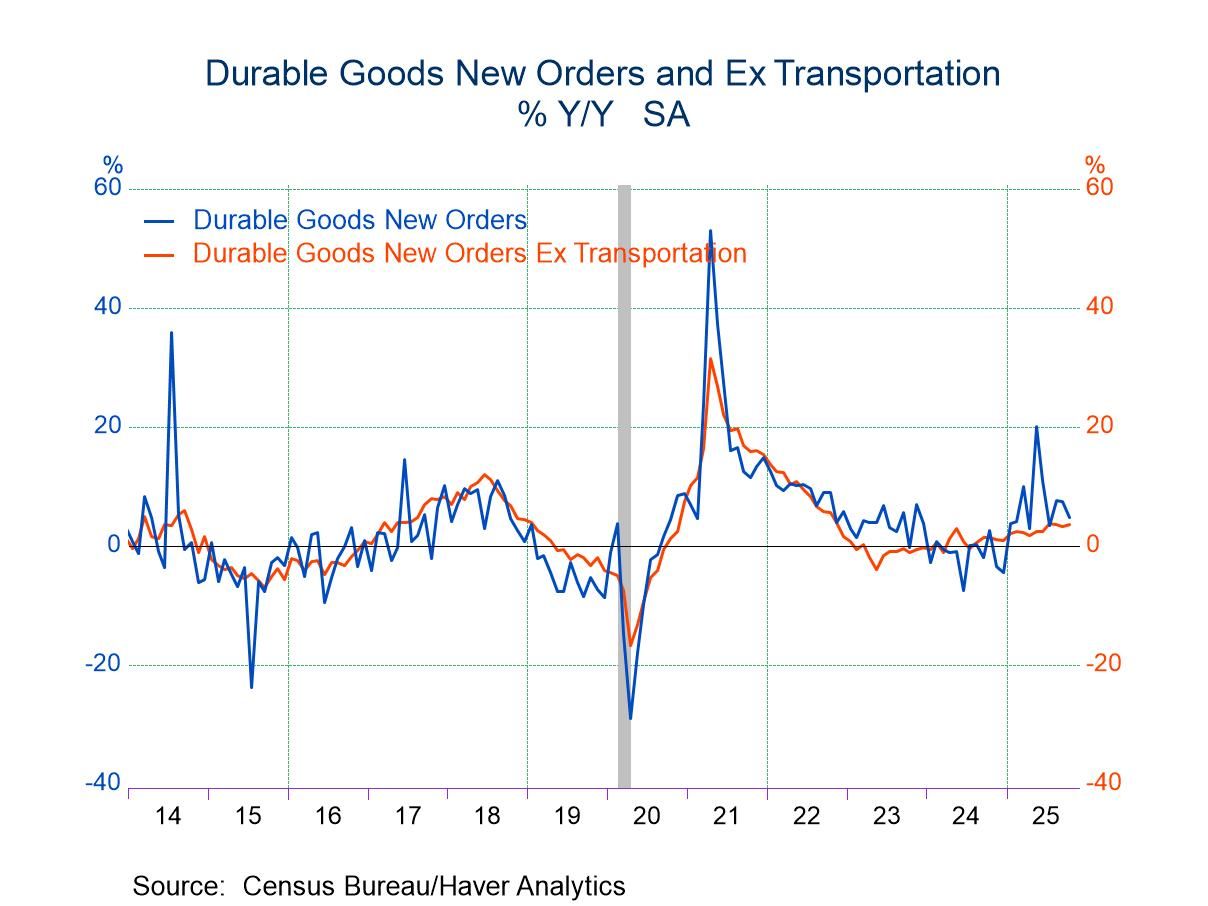Japan’s Production Contracts in November after a Strong October

Industrial production in Japan fell by 1.3% in November after rising by 2.2% in October. Japan's production profile, however, shows an acceleration is in progress. Over 12 months production falls by 1.2%, over 6 months output is rising at a 3.7% annual rate, and over 3 months it's rising at an even stronger, at a 4.3% annual rate.
Manufacturing: The manufacturing sector echoes the results in the trends of the headline. Manufacturing IP is close to showing acceleration in progress but for a technical shortfall. Manufacturing output falls by 1.3% over 12 months, then it accelerates at a strong 5.6% annual rate, although there's a slight set-back to trend as the 3-month growth rate recedes to 5.2%; the 3-month and 6-month growth rates are nearly identical and much stronger than the year-over-year growth rate. Technically I can't say that this is ongoing acceleration, but it's certainly a strong picture for manufacturing output.
Product Group Performance: Product group results in Japan in November show widespread declines with a decline of 2.2% in consumer goods output, a decline of 0.1% in intermediate goods output, and a decline of 2.2% in investment goods output. All of these are changes, and are, for the most part, reversals, from the output that the sectors reported in October as consumer goods output expanded by over 5%, intermediate goods output expanded by 1.4%, and investment goods output was flat.
Sequential Growth trends by Sector: Checking the sector results for sequential trends and acceleration, we find: • Acceleration in intermediate goods where output falls by 0.9% over 12 months, rises 5% at an annual rate over 6 months, and accelerates to a 5.6% annual rate over 3 months. • Consumer goods show a tendency toward acceleration but do not show a clear unwavering acceleration path. Consumer goods output is up by 1.8% over 12 months; it then recedes, falling at a 4.7% annual rate over 6 months, but it follows that with a surge, growing at a 15.7% annual rate over 3 months. Consumer goods output has a hiccup in between its 12-month and 3-month rates of growth- with that decline over 6 months. • Paradoxically, investment goods are closer to showing ongoing deceleration. Output falls by 5.3% over 12 months, and then falls at a 15.7% annual rate over 6 months. Investment goods trim their loss over 3 months to an 11.4% annual rate of decline, but that's still a decline in double digits. Having double digit declines over 3 months and 6 months definitely is a buzzkill in terms of evaluating trends for Japanese industrial output.
Other Industry: Looking separately at other components of overall industrial production in November, there are increases in mining and in electric and gas utilities output on the order of growth rates of 2 to 2 1/2 percent. In each case, there are reversals of declines in output posted in October. Sequentially, mining output is recovering strongly with output falling 1% over 12 months, rising at a 2.2% annual rate over 6 months, then exploding for a 27.4% annual rate gain over 3 months. Utilities output is more questionable, falling by 0.2% over 12 months, rising over 6 months at only a 0.2% pace, and then falling at a substantial 16.8% annual rate over 3 months. It's hard to understand why electric and gas output falls so strongly over 3 months when other categories of output are all rising solidly or strongly over 3 months; industry clearly needs utilities output to advance. It's very possible that there's some sort of weather effect operating that has retarded the usage of utilities over the last 3 months. It's hard to take utilities out of the context of the report and treat it as something that is authentically weak or worrisome.
Quarter-to-date: In the quarter-to-date, overall output is expanding at a 7.5% annual rate with manufacturing up at 8.2% annual rate. These are data with two-months’ worth of observations in place calculating the two-month average gain over the third quarter base. Sector results for quarter-to-date data show strong gains in consumer goods, as well as intermediate goods and in mining. But there's a significantly strong decline in output in investment goods and an extreme decline in utilities output in the quarter-to-date.

Summing up All the categories in the industrial production report in the table are below their January 2020 levels. Japan still has not been able to mount an ongoing increase in output that is strong enough and sustained enough to make net gains. Over a period of nearly three years, output is still lower than it was three years ago.
Robert Brusca
AuthorMore in Author Profile »Robert A. Brusca is Chief Economist of Fact and Opinion Economics, a consulting firm he founded in Manhattan. He has been an economist on Wall Street for over 25 years. He has visited central banking and large institutional clients in over 30 countries in his career as an economist. Mr. Brusca was a Divisional Research Chief at the Federal Reserve Bank of NY (Chief of the International Financial markets Division), a Fed Watcher at Irving Trust and Chief Economist at Nikko Securities International. He is widely quoted and appears in various media. Mr. Brusca holds an MA and Ph.D. in economics from Michigan State University and a BA in Economics from the University of Michigan. His research pursues his strong interests in non aligned policy economics as well as international economics. FAO Economics’ research targets investors to assist them in making better investment decisions in stocks, bonds and in a variety of international assets. The company does not manage money and has no conflicts in giving economic advice.






